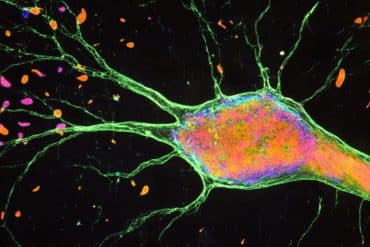Summary: Heavy cannabis use in women is associated with a reduced risk of developing diabetes, a new study reveals.
Source: Texas A&M
A new study recently published in Cannabis and Cannabinoid Research found that women who heavily used cannabis had lower incidence of diabetes, a chronic condition that prevents the body from either making enough insulin (type 1) or being able to use insulin efficiently (type 2).
Approximately one in 10 Americans has diabetes, and the condition accounted for 87,647 deaths in the United States in 2019, making it the seventh leading cause of death for that year.
For the study, Texas A&M University School of Public Health graduate students Ayobami Ogunsola, Samuel Smith, Udeh Mercy and Olatunji Eniola, along with a colleague from Hofstra University, analyzed data from the National Health and Nutrition Examination Survey (2013-2018). From approximately 15,000 participants. The majority of participants were female, white (non-Hispanic), over 40, and had at least a college-level education.
Cannabis use was estimated on the basis of exposure and frequency of use with smoking cannabis fewer than four times per month deemed “light use,” and “heavy use” defined as four or more times per month. Diabetes status was determined by physician diagnosis or meeting criteria for plasma glucose, fasting blood glucose or hemoglobin A1C levels.

Female participants who used cannabis heavily were less likely to be diagnosed with diabetes than female participants who did not use cannabis. Light cannabis use by female participants had no association with diabetes diagnosis. Researchers found no association in male participants between diabetes and any level of cannabis use.
Previous research has shown that the endocannabinoid system, a series of neurotransmitters and receptors in the nervous system involved in numerous biological processes, has different effects depending on sex. Cannabidol and delta-9-tetrahydrocannabidol, two key compounds in cannabis, stimulate receptors in the endocannabinoid system that result in improved glucose disposal. The authors note that this is one possible explanation for the sex-based difference found during their study.
Further research is needed to better understand the association observed in this study, especially to analyze the individual and contextual variables and mechanisms that may be responsible.
About this diabetes research news
Author: Rae Lynn Mitchell
Source: Texas A&M
Contact: Rae Lynn Mitchell – Texas A&M
Image: The image is in the public domain
Original Research: Closed access.
“Sex Differences in the Association Between Cannabis Use and Diabetes Mellitus among U.S. Adults: The National Health and Nutritional Examination Survey, 2013-2018” by Ayobami Ogunsola et al. Cannabis and Cannabinoid Research
Abstract
Sex Differences in the Association Between Cannabis Use and Diabetes Mellitus among U.S. Adults: The National Health and Nutritional Examination Survey, 2013-2018
Background: Diabetes mellitus is an important public health problem in the United States, accounting for 87,647 deaths in 2019. This study aimed to assess the association between cannabis use and diabetes mellitus by sex among U.S. adults.
Methods: Data were abstracted from the National Health and Nutrition Examination Survey (NHANES) from 2013 through 2018. Cannabis use was estimated using exposure status and frequency of use. Diabetes mellitus was assessed based on physician diagnosis or laboratory results, per the American Diabetes Association guidelines. A multivariable survey logistic regression model was fitted to estimate adjusted odds ratios (aOR) and confidence intervals (95% CIs).
Results: A total of 15,062 participants were included in this study. The majority were female (n=7845; 51.1%), >40 years of age (n=8564; 56.3%), non-Hispanic white (n=4873; 61.5%), with at least a college-level education (n=8239; 62.5%). Female participants who used cannabis heavily were less likely to be diagnosed with diabetes mellitus than female noncannabis users (aOR=0.49; 95% CI: 0.30–0.81; aOR=0.51; 95% CI: 0.31–0.84). However, no significant association was found for female adults who engaged in light use of cannabis (aOR=0.98; 95% CI: 0.55–1.75; aOR=1.01; 95% CI: 0.57–1.79). Among male adults, cannabis use, irrespective of the degree of exposure, was not significantly associated with diabetes mellitus (heavy users: aOR=0.89; 95% CI=0.56–1.41; light users: aOR=0.53; 95% CI=0.22–1.29).
Conclusions: Heavy cannabis use is inversely associated with diabetes mellitus in females but not males. Further studies are needed to explore the sex-based heterogeneity—and individual and contextual factors responsible—in the association between cannabis use and diabetes mellitus.







